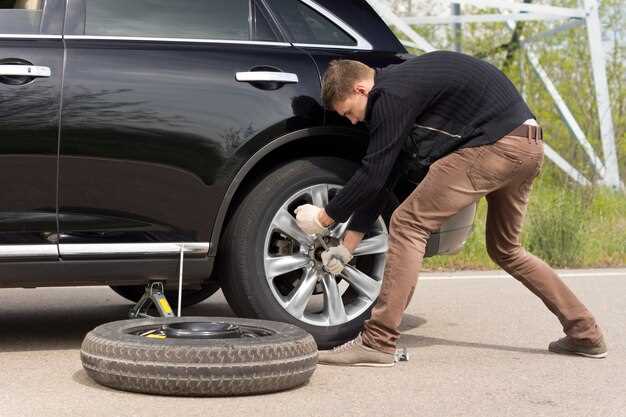
Balancing your car wheels is a crucial step in ensuring a smooth and safe ride. Proper wheel balancing helps distribute weight evenly across your tires, minimizing vibrations that can cause discomfort and uneven tire wear. A well-balanced wheel setup not only enhances driving comfort but also extends the life of your tires and improves overall vehicle performance.
When it comes to the process of balancing your car wheels, attention to detail is paramount. This involves checking for any discrepancies in weight distribution and adjusting the wheel assembly accordingly. By learning the essential steps for proper wheel balancing, you can prevent potential issues that may arise from neglected maintenance, such as compromised handling and increased fuel consumption.
In the following sections, we will explore the key steps you need to take to ensure your car’s wheels are balanced correctly. From assessing your tires to understanding the balancing techniques, we will provide comprehensive guidance for achieving that smooth ride you desire.
Understanding the Importance of Wheel Balancing

Wheel balancing is a crucial step in maintaining the overall performance and safety of your vehicle. Properly balanced wheels contribute to a smooth ride by ensuring that weight is evenly distributed around the wheel assembly. When wheels are unbalanced, it can lead to vibrations that not only disrupt comfort but also increase wear on tires and suspension components.
During driving, an unbalanced wheel creates excessive stress on the tires, resulting in uneven tread wear. This can shorten the lifespan of your tires significantly, leading to premature replacements and increased costs. By prioritizing wheel balancing, you can enhance tire performance and extend their longevity.
Additionally, balancing your wheels improves handling and stability, making your drive safer and more enjoyable. The reduced vibrations allow for better control over the vehicle, especially at higher speeds. This is essential for both daily commuting and long road trips, where a smooth ride can greatly enhance the driving experience.
In short, regular wheel balancing should not be overlooked. It is a simple yet effective way to ensure optimal performance, comfort, and safety for your car while maximizing the lifespan of your tires.
Tools and Equipment Needed for Wheel Balancing

To achieve a smooth ride and optimal vehicle performance, proper wheel balancing is essential. The following tools and equipment are necessary for effective wheel balancing:
1. Wheel Balancer: This is the primary piece of equipment needed for balancing wheels. A wheel balancer detects and corrects imbalances by measuring the distribution of weight around the wheel. There are manual and electronic models available, with electronic versions providing more precise readings.
2. Tire Pressure Gauge: Before balancing, it is crucial to check and adjust the tire pressure. An accurate tire pressure gauge ensures that all tires are inflated to their recommended levels, aiding in achieving a smooth balance.
3. Wheel Weights: These are used to counterbalance any imbalances detected during the balancing process. They come in various types, including clip-on and adhesive weights, which can be applied to the wheel rim as needed.
4. Lug Wrench: A lug wrench is essential for removing and installing the wheels on the vehicle. It allows for easy access during the balancing process.
5. Tire Removal Tools: These include tools like tire irons or pry bars, which help in safely removing tires from the rims without causing damage.
6. Wheel Chocks: To prevent movement of the vehicle during the balancing process, wheel chocks are essential. They secure the vehicle in place, providing safety and stability.
7. Safety Equipment: Appropriate safety gear such as gloves and goggles should be used to protect the user while handling heavy wheels and working with tools.
Having the right tools and equipment is critical for achieving proper wheel balancing, ensuring a smooth and safe driving experience.
Step-by-Step Guide to Balancing Your Car Wheels
Balancing your car wheels is essential for achieving a smooth and comfortable ride. Imbalanced wheels can lead to uneven tire wear and can affect vehicle handling. Follow these steps to ensure your wheels are properly balanced.
Step 1: Gather the Necessary Tools
Before you begin, make sure you have the right tools. You will need a jack, jack stands, a lug wrench, and wheel weights. If you plan to use a wheel balancer, make sure it is functioning properly.
Step 2: Lift the Vehicle
Using the jack, lift the vehicle and secure it on jack stands. This ensures your safety while you work on the wheels. Make sure the car is on a flat, stable surface.
Step 3: Remove the Wheels
Use the lug wrench to remove the lug nuts from the wheels. Keep these nuts in a safe place, as you will need them to reattach the wheels later.
Step 4: Clean the Wheels
Before balancing, clean the wheel surfaces where the weights will be attached. Dirt and grime can affect the adhesion of the weights, leading to improper balancing.
Step 5: Use a Wheel Balancer
If you have access to a wheel balancer, mount the wheel securely on the machine. Follow the manufacturer’s instructions to balance the wheel. The machine will indicate where to place the weights to achieve a smooth balance.
Step 6: Attach Weights
Based on the balancer’s readings, attach the appropriate weights to the wheel’s rim. Be sure to use the right amount of weight for proper balancing.
Step 7: Reattach the Wheels
Once the weights are in place, reattach the wheels to the vehicle. Hand-tighten the lug nuts first before lowering the car back to the ground.
Step 8: Tighten Lug Nuts
With the vehicle back on the ground, fully tighten the lug nuts using the lug wrench in a crisscross pattern to ensure even distribution of pressure.
Step 9: Test Drive
Take your vehicle for a test drive to ensure the ride is smooth and there are no vibrations. Pay attention to how the car handles, making sure everything feels right.
By following these steps, you can effectively balance your car wheels, ensuring a smoother, safer driving experience.




